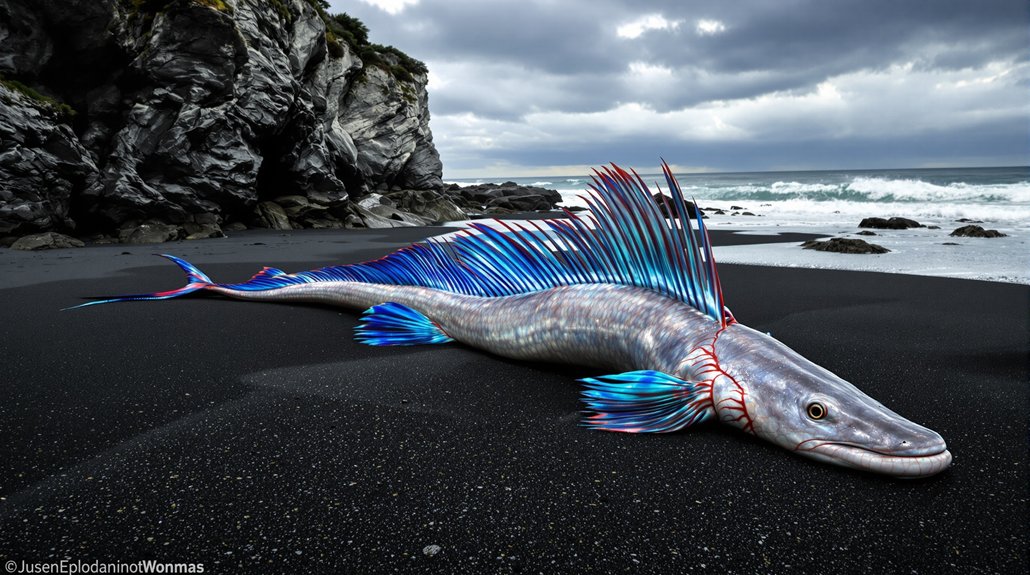Mystery from the deep. Three oarfish strandings were reported in Tasmania and New Zealand in early June 2025, sending locals into a frenzy. One specimen washed up on Tasmania’s western Ocean Beach near Strahan, while two headless ones appeared on New Zealand’s South Island at Aramoana and near Birdlings Flat.
The fish weren’t actually 26 feet long, despite what tabloids might claim. The recent specimens measured around 3-3.6 meters, though the species can reach a whopping 8 meters.
Don’t believe the hype—these specimens were merely 3-3.6 meters, not the tabloid-touted 26-foot monsters.
These silver, blue, and crimson ribbon-like creatures rarely surface. New Zealand has become something of an oarfish hotspot, with about twenty confirmed sightings in recent years. Seven of those happened between 2015 and mid-2025. Not bad for a fish most people never see in their lifetime.
Scientists are frustrated. The headless specimens—likely picked clean by scavengers—make thorough study difficult. No heads means no otoliths, teeth, or gill rakers to examine. Talk about inconvenient timing. Each stranding represents a rare research opportunity, with museums like Te Papa Tongarewa keen to get their hands on specimens.
Of course, the media can’t resist dubbing them “fish of the apocalypse” or “doomsday fish.” Cue the dramatic music. Some legends claim oarfish sightings predict earthquakes or disasters, especially after Japan’s 2011 earthquake. Scientists roll their eyes at this nonsense. There’s zero evidence linking these fish to impending doom. A comprehensive statistical study in 2019 conclusively found no correlation between oarfish appearances and seismic events.
Tasmania’s sighting raised eyebrows since it’s outside the oarfish’s typical tropical habitat. Strange. Other global reports in recent years include Miami, Dominican Republic, Italy, and Mexico.
The iNaturalist app has become a valuable tool for tracking these elusive creatures. These remarkable deep-sea dwellers typically remain in their abyssal habitat, explaining why encounters with humans are so infrequent.
References
- https://sharonahill.com/unfortunate-media-trend-to-make-oarfish-the-doomsday-fish/
- https://www.energy-reporters.com/environment/i-felt-the-ground-tremble-scientists-shaken-as-three-giant-apocalypse-fish-wash-ashore-in-one-week-stirring-ominous-global-fears/
- https://www.sustainability-times.com/research/fish-of-the-apocalypse-washing-ashore-three-giant-26-foot-oarfish-found-dead-in-tasmania-and-new-zealand-within-days/
- https://www.sustainability-times.com/climate/giant-oarfish-sightings-terrify-locals-as-scientists-scramble-to-explain-why-so-many-deep-sea-monsters-are-emerging-this-summer/
- https://www.deccanchronicle.com/southern-states/tamil-nadu/doomsday-fish-sightings-spark-fear-of-catastrophe-1886440








